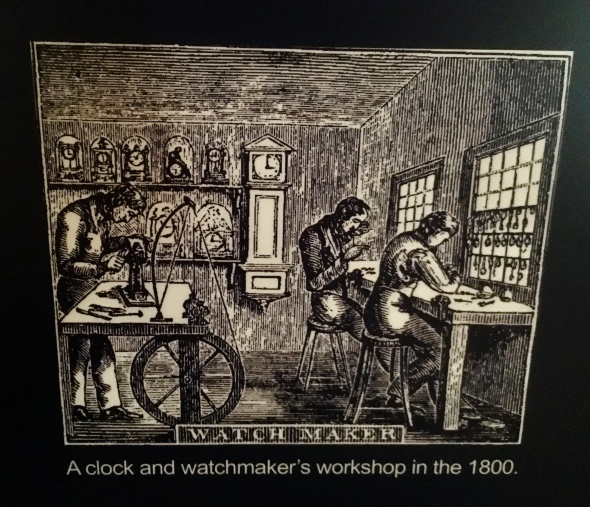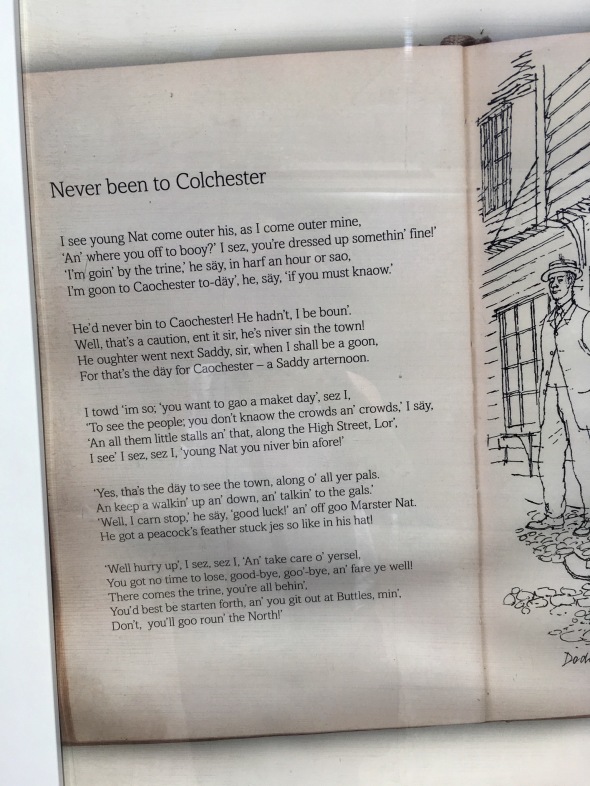Is it time you visited Colchester?
Colchester’s been busy – a new advert using the tagline #ifthesewallscouldtalk has popped up on our television screens and sets out to promote the town’s many historic attractions. As England’s oldest recorded town and also its first Roman city, there’s a lot of history to uncover. But while most of us in the region know about Colchester’s castle, some of its more recent history can get overlooked.
As part of Greater Anglia’s summer #railadventure campaign, I set out to rediscover Colchester. The first decision I had to make was which station to use: Colchester has three railway stations. I opted to alight at Colchester Town (formerly known as St Botolph’s) as it is closer to the town centre than Colchester (also known as Colchester North) and Hythe. From there it was a six minute stroll to my first stop.
Tymperleys is a Tudor mansion tucked away in a courtyard off historic Trinity Street. Building began in the 1490s and over time it was added to and altered as the place changed hands. Among its illustrious owners was William Gilberd, an Elizabethan scientist who, it’s said, came up with the term “electricity”. Later, Colchester businessman Bernard Mason, who owned a successful printing firm, bought the place. His passion was clocks and amassed a collection of over 200 timepieces, one of the largest in Britain. This is what Wikipedia has to say about him:
Mason was a Freeman of the Worshipful Company of Clockmakers and the author of “Clock and Watchmaking in Colchester” (1969) which originally cost four guineas (£4 4s 0d £4.20). He was made an OBE in 1959. Mason claimed that there are 375 known examples of Colchester clocks and he managed to collect 216 of them in his lifetime, travelling far and wide to bring them back “home”.

After Mason’s death, he bequeathed his collection – and the house – to the people of Colchester. In 1987, the Tymperleys Clock Museum opened and would remain a popular attraction until 2011. But I had another reason to visit. These days, Tymperleys is perhaps (despite stiff competition!) the best cafe in the town centre and it’s especially lovely in the summer when you can eat al fresco in the delightful walled garden. No surprise, therefore, that most customers were sitting outside. With a fierce July sun beating down, I was glad of the shade of a garden umbrella as I enjoyed a tasty lunch surrounded by the pretty floral displays.
These days, not a single clock from Bernard’s collection – I asked – is left in Tymperleys. Before you fret, however, they have been moved. A short stroll across the town centre you’ll find them in the excellent Hollytrees Museum. It’s free to look around and learn something of the Colchester clockmaking industry which, it turns out, was quite something back in the day. Once a centre for baymaking (the manufacture of a felted woollen cloth), Colchester’s industry diversified in the Georgian era and it was then that the town became a centre for clock making.

Perhaps most productive of these craftsmen was Nathaniel Hedge. The Hedge family set up in business in 1739, running a factory from 1745 until the late 1780s. Other names to look out for include John Smorthwait, who trained up the young Nathaniel. One of the oldest clocks on display is a Thirty Hour Longcase clock made in 1698 by Jeremy Spurgin out of oak. Many of the pendulum clocks on display feature adornment in a style known as Japanning, a lacquered decorative finish involving paint and varnish. It’s an intricate style, a reminder that fashion was as important as function when it came to clockmaking.
By 1800, however, the industry had peaked and went into a steep decline as clocks could be made elsewhere much more cheaply. The industry and its contribution to Colchester’s history would be all but forgotten if it wasn’t for Bernard Mason. Whether you’re local or visiting from outside the region, it’s well worth the detour to take a look at this fascinating collection.
The visitor information centre is housed on the ground floor of Hollytrees Museum; their walking tours of the town provide an insight into the town’s past that you’d be hard pressed to achieve without their knowledgeable guide. For this and more on the town’s historic attractions, check out my previous blog.
The lowdown
Greater Anglia offered me a free train ticket in exchange for writing this review of my #railadventure. Travelling by train is an inexpensive way to travel, particularly off peak. For instance, if booked in advance, tickets from Norwich to London cost just £10, Cambridge to London can be had for £7 and Southend to London only £5 (all fares quoted are one way). Accompanied children travel for just £2 return and you don’t even have to pre-book their ticket – this fare is valid on all off peak trains within the Greater Anglia network. On top of this, GA are offering a 2FOR1 deal on top London attractions; with the summer holidays fast approaching this is great news for families. And don’t forget, the excellent Hollytrees Museum is free. It even has a kid-friendly display of vintage toys and a couple of nursery rhyme surprises, though I’ll leave you to discover those for yourself.
Colchester Town station had one last treat as I was waiting to board my train home. This poem, written by C. E. Benham in 1890 is entitled “A ballad of the Tendring Hundred” and you’ll find it on the station wall. Best read out loud – see how well your North Essex accent turns out!

Discover destinations and ticket prices at www.greateranglia.co.uk and plan your journey at www.nationalrail.co.uk.
Did you feel inspired to plan your own rail adventure after reading this blog? Why not complete Greater Anglia’s survey using this link:














